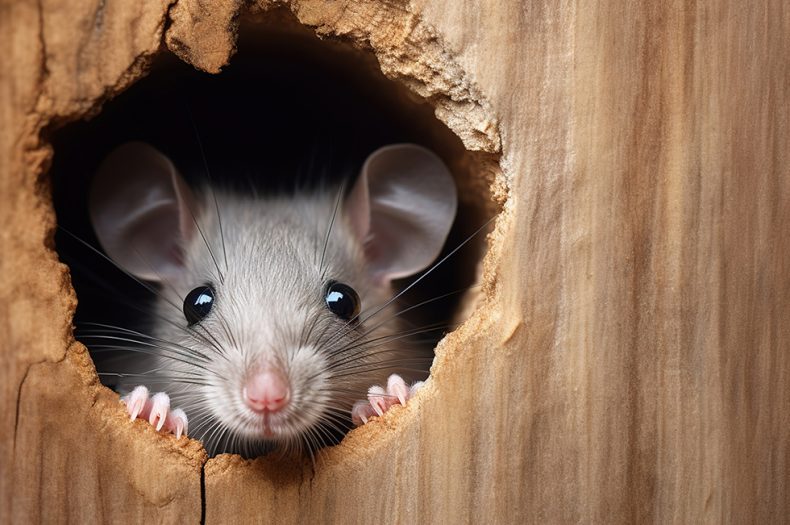Rats can be a nuisance when they invade homes or businesses. Yet, many people are understandably reluctant to kill these creatures. Whether you’re an animal lover, an eco-conscious individual, or simply want a more humane solution, there are several effective methods for getting rid of rats without causing them harm. The key is to use a combination of preventative measures, repellents, and non-lethal traps.
In this article, we’ll explore the best ways to humanely remove rats from your property while ensuring they don’t return. These methods are environmentally friendly, safe for pets and children, and can be used in both residential and commercial settings.
Why Avoid Killing Rats?
Before we dive into the solutions, it’s important to understand why you might want to avoid killing rats. There are several reasons people opt for humane methods:
- Ethical Concerns: Many people believe that all creatures, including rats, deserve to be treated with kindness and respect. Killing them is viewed as unnecessary and inhumane.
- Environmental Impact: Using poisons or lethal traps can have unintended consequences on other wildlife and the environment. These chemicals can harm pets, beneficial animals, and even pollute water sources.
- Health and Safety: Rat poisons and other lethal methods can pose risks to human health, especially in homes with small children or pets.
- Long-Term Effectiveness: Killing rats may solve the immediate problem, but it doesn’t address the root cause. Without eliminating the factors that attract rats, more rodents will likely take their place.
Preventive Measures to Keep Rats Away
The most effective way to deal with rats is to prevent them from entering your home or business in the first place. Here are some crucial steps to rat-proof your property:
- Seal Entry Points: Rats can squeeze through very small openings. Inspect your home for any gaps, holes, or cracks in walls, doors, windows, and foundations. Use caulking, steel wool, or mesh to seal these openings. Pay close attention to spaces around pipes, vents, and drains.
- Remove Food Sources: Rats are attracted to easy food supplies. Make sure all food is stored in airtight containers, and avoid leaving pet food or birdseed out overnight. Clean up crumbs, spills, and garbage regularly.
- Eliminate Water Sources: Rats need water to survive. Fix any leaky faucets, pipes, or drains, and ensure that gutters and downspouts direct water away from your home. Remove any standing water around your property, such as in birdbaths or buckets.
- Clear Clutter: Rats love to hide in cluttered spaces. Remove piles of wood, leaves, or debris from around your property, and keep your home or business as tidy as possible. Ensure that storage areas are clean and organized, and avoid stacking materials directly against walls.
Humane Rat Traps
When it comes to capturing rats without killing them, humane traps are your best option. These traps are designed to catch rats alive, allowing you to release them safely away from your home.
- Live Cage Traps: These are small, metal cages that lure rats inside using bait. Once the rat steps on the trigger, the door closes, trapping the rat inside without harming it. Common baits include peanut butter, cheese, or fruits. After catching a rat, be sure to release it at least a mile away from your home, ideally in a wooded or field area.
- Multiple-Catch Traps: These traps are similar to live cage traps but can catch several rats at once. They are especially useful if you’re dealing with a larger infestation.
- Bucket Traps: A simple DIY trap can be made using a bucket and a ramp. The rat climbs the ramp to reach the bait, usually balanced on a spinning or tilting surface. Once the rat steps on it, it falls into the bucket unharmed. This method works well for catching multiple rats in one go.
Natural Repellents to Keep Rats Away
Using natural repellents is another effective way to deter rats without harming them. Here are some natural substances that rats find repulsive:
- Peppermint Oil: Rats have a strong sense of smell, and they dislike the scent of peppermint. Soak cotton balls in peppermint oil and place them in areas where you’ve seen rats, such as near entry points, in cupboards, or behind appliances. Reapply the oil every few days to keep the scent strong.
- Cayenne Pepper: Sprinkle cayenne pepper around the perimeter of your home or garden, especially near entry points. The spicy scent acts as a deterrent for rats, making them less likely to venture inside.
- Ammonia: The smell of ammonia mimics the scent of predator urine, which scares rats away. Place small containers of ammonia in rat-prone areas, but make sure they’re out of reach of pets and children.
- Onions and Garlic: The strong smell of onions and garlic can repel rats. Place cut onions or garlic cloves in areas where rats are likely to enter. Be sure to replace them regularly, as their effectiveness decreases as the smell fades.
- Used Cat Litter: Rats tend to avoid areas where they sense predators. Placing used cat litter (or even clean litter) in areas where rats are a problem can signal the presence of a predator, deterring them from the area.
Electronic Rat Repellents
Electronic devices that emit ultrasonic sound waves can be used to repel rats without killing them. These devices produce high-frequency sounds that are irritating to rodents but inaudible to humans and pets. However, it’s worth noting that the effectiveness of ultrasonic repellents can vary depending on the size of the space and the severity of the infestation.
To maximize their effectiveness, place electronic repellents in areas where rats are most active. Since sound waves can be blocked by walls and furniture, use multiple devices to cover larger areas.
Create an Unfriendly Environment for Rats
One of the simplest ways to encourage rats to leave your property is to make the environment less appealing to them. Here’s how:
- Bright Lights: Rats are nocturnal and prefer dark, secluded spaces. Installing bright lights in areas where rats are active can make the environment uncomfortable for them.
- Noise: Loud, continuous noise can also disturb rats and cause them to seek a quieter location. Radios, fans, or other sound-emitting devices can be used to create a noisy environment that rats will want to escape.
- Predator Presence: Rats fear predators like cats, owls, and hawks. If you have a cat, allow it to roam the areas where rats are present. Alternatively, placing plastic owls or other predator decoys in your yard can deter rats from entering.
Relocation of Rats: Do’s and Don’ts
Once you’ve caught rats in humane traps, it’s important to relocate them safely and responsibly. Here are some guidelines to follow:
- Release Location: Choose a location at least a mile away from your home to prevent the rat from returning. Ideally, release the rat in a wooded area or a field where it can find food, shelter, and water.
- Timing: Release rats during the day, as they are nocturnal creatures. This gives them time to find a new shelter before nightfall.
- Handle with Care: Wear gloves when handling the traps to avoid direct contact with the rat. Rats can carry diseases, so it’s important to minimize exposure.
FAQs
1. Can rats climb walls and enter through the roof?
Ans – Yes, rats are excellent climbers and can scale walls to enter through roofs, vents, or chimneys. Make sure to seal any openings at height as part of your prevention strategy.
2. Is peppermint oil really effective against rats?
Ans – Peppermint oil can be a strong deterrent for rats due to its overwhelming scent, but it should be used in combination with other methods for best results.
3. What should I do if I find a rat nest?
Ans – If you find a rat nest, remove it carefully while wearing gloves. Clean the area thoroughly and use deterrents to prevent them from returning. Ensure that entry points are sealed.
4. How far should I release trapped rats?
Ans – Rats should be released at least one mile away from your home or business to prevent them from finding their way back.
5. Are ultrasonic repellents harmful to pets?
Ans – Ultrasonic repellents are generally safe for pets like cats and dogs, as they cannot hear the high-frequency sound. However, smaller pets like hamsters may be affected, so use caution.
6. How can I keep rats out of my garden?
Ans – To keep rats out of your garden, remove any food sources like fallen fruits, secure your compost bin, and use natural repellents like peppermint oil or cayenne pepper around the perimeter.
Conclusion
Getting rid of rats without killing them is not only humane but also an effective long-term strategy for keeping these pests out of your home. By focusing on prevention, using natural repellents, and utilizing humane traps, you can create an environment that’s unwelcoming to rats without resorting to lethal methods. With patience and persistence, it’s possible to maintain a rat-free property while ensuring that no harm comes to the creatures themselves.



